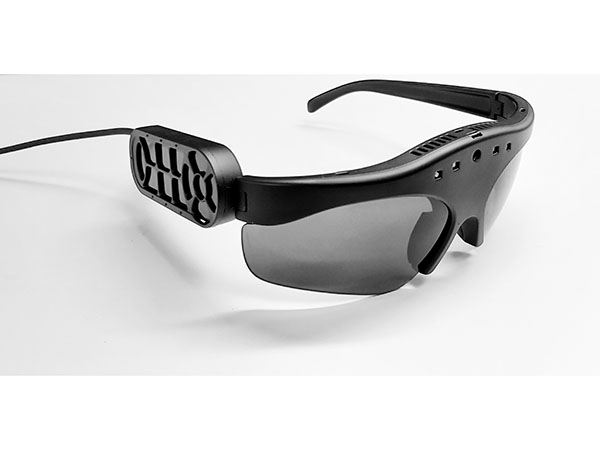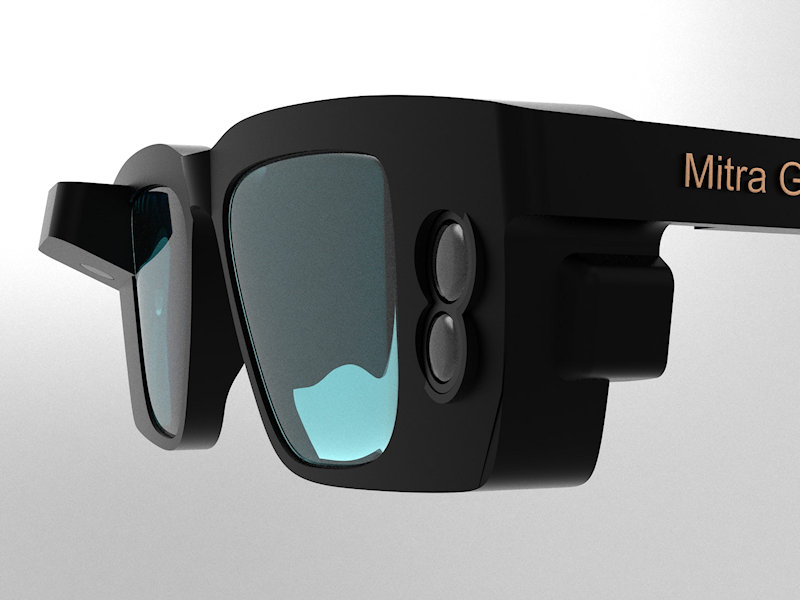The Future of Assistive Technology for the Blind: Empowering Independence
The Future of Assistive Technology for the Blind: Empowering Independence
Blog Article
Empowering Independence With Assistive Modern Technology for the Blind
The integration of assistive modern technology for individuals who are blind or aesthetically impaired represents a significant innovation in promoting independence and improving lifestyle. With an array of tools-- from display visitors to cutting-edge responsive tools-- these modern technologies not just help with navigating and communication yet also advertise social inclusion and participation in various facets of life. As we check out the diverse kinds of assistive devices and their real-world applications, it ends up being clear that the impact is extensive. Yet, the evolution of this modern technology elevates essential concerns about access and future growths that warrant additional evaluation. Assistive technology for the blind.
Comprehending Assistive Innovation
Although assistive modern technology has actually developed dramatically throughout the years, its basic objective remains the very same: to boost the lifestyle for people with disabilities, particularly those that are blind or aesthetically damaged. This technology includes a wide variety of devices and gadgets that promote freedom and performance in daily activities.
Assistive innovation can be classified right into low-tech and modern solutions, each created to fulfill specific requirements. High-tech devices typically consist of software program applications, specialized hardware, and flexible devices that use innovative innovation to supply assistance in various contexts. Conversely, low-tech services might involve daily products that are modified to enhance accessibility, such as magnifiers or responsive pens.
The assimilation of assistive modern technology right into the lives of people that are blind or visually harmed not only advertises freedom but also cultivates social incorporation and engagement in instructional and specialist environments. By leveraging these innovations, individuals can browse their environments, access info, and connect properly, thus enhancing their total high quality of life. Understanding assistive modern technology is crucial for experts, caretakers, and supporters who aim to sustain individuals in optimizing their possible and accomplishing greater independence.
Types of Assistive Devices
Assistive devices for the blind and aesthetically impaired are important tools that enhance daily living by attending to certain obstacles run into by customers. These tools can be generally categorized right into 3 major kinds: optical devices, electronic devices, and sensory devices.

Sensory gadgets, such as Braille screens and responsive maps, give different methods to receive info. Braille displays convert electronic message right into Braille, making it possible for individuals to go through touch. Responsive maps provide spatial understanding through raised appearances and lines, permitting better ecological recognition.
With each other, these assistive gadgets empower individuals with visual problems to involve even more totally with their surroundings, promoting greater self-reliance and self-confidence in everyday tasks.

Influence On Life
The assimilation of assistive innovation right into the day-to-days live of individuals that are visually damaged or blind dramatically boosts their ability to connect and navigate with the world around them. Gadgets such as display visitors, Braille shows, and mobile applications assist in accessibility to details, enabling individuals to involve with electronic web content, interact efficiently, and manage day-to-day jobs individually.
Additionally, technologies like wise glasses and navigating applications offer real-time aid in unfamiliar settings, enhancing mobility and confidence. These devices enable individuals to determine barriers, checked out indicators, and even acknowledge faces, hence fostering a sense of freedom in public spaces. Furthermore, home automation systems, which can be regulated via voice commands, allow people to manage their living atmospheres better, enhancing convenience and security.
The effect of assistive innovation he said prolongs past functional jobs; it promotes social incorporation and psychological health. By connecting the void in between people and their surroundings, these technologies equip individuals to get involved totally in community activities, go after instructional possibilities, and take part in significant connections. Eventually, the innovation of assistive innovation contributes in redefining the opportunities for individuals who are blind or visually damaged, leading to a more inclusive and available society.
Success Stories and Reviews

An additional powerful testimony comes from Mark, a recent university grad who made use of display analysis software throughout his academic journey. This innovation allowed him to gain access to course products and take part in discussions, ultimately causing his effective transition into the labor force. Mark credits assistive modern technology for encouraging him to attain his occupation objectives, stressing its role in leveling the playing eye exam places field for individuals with visual impairments.
Additionally, community centers have actually reported enhanced involvement in their programs thanks to the introduction of easily accessible electronic systems. These systems have made it simpler for individuals to link, share sources, and assistance one an additional. These success tales collectively underscore the extensive effect of assistive technology in fostering self-reliance, enhancing lifestyle, and breaking down obstacles for the aesthetically impaired and blind area.
Future Fads in Assistive Technology
Arising technologies are poised to revolutionize the landscape of assistive tech for people that are blind or aesthetically impaired. Technologies in expert system (AI) and artificial intelligence are boosting the capabilities of gadgets, allowing even more instinctive individual experiences. AI-driven applications are increasingly able to read and identify objects message out loud in real-time, supplying customers with beneficial information about their surroundings.
In addition, developments in wearable innovation are creating brand-new opportunities for freedom. Smart glasses geared up with enhanced reality attributes can overlay essential details onto the customer's visual field, helping with navigating and interaction with the atmosphere. Moreover, the combination of Web of Points (IoT) devices is simplifying ease of access in clever homes, permitting individuals to regulate home appliances and get notifications through voice commands or tactile user interfaces.
The development of braille display screens and tactile responses systems is likewise on the increase, promoting accessibility to electronic content and enhancing interaction. As these modern technologies remain to progress, they guarantee to improve daily living, educational possibilities, and work leads for people with aesthetic disabilities. Continual partnership in between engineers, individuals, and campaigning for groups will be vital in making certain these advancements meet the needs of the neighborhood successfully.
Conclusion
In conclusion, assistive innovation plays an essential role in boosting the self-reliance of people that are aesthetically impaired or blind. By supplying important tools and resources, these innovations help with boosted communication, access, and navigation to info, consequently promoting freedom and confidence. The transformative impact of assistive devices not just promotes reliable interaction with the environment yet additionally motivates social incorporation and participation in different elements of life, eventually equipping customers to thrive within their neighborhoods.
The combination of assistive modern technology for individuals who are blind or visually damaged stands for a substantial improvement in fostering self-reliance and enhancing top quality of life.The integration of assistive modern technology right into the lives of people who are blind or visually hindered not only promotes freedom however likewise promotes social inclusion and involvement in specialist and educational settings. Eventually, the innovation of assistive technology is crucial in redefining the possibilities for individuals who are aesthetically damaged or blind, leading to a much right here more inclusive and accessible society.
Lots of people that are blind or aesthetically impaired have shared motivating success tales that highlight the transformative impact of assistive innovation on their lives.In verdict, assistive innovation plays a crucial role in improving the self-reliance of people who are aesthetically impaired or blind.
Report this page